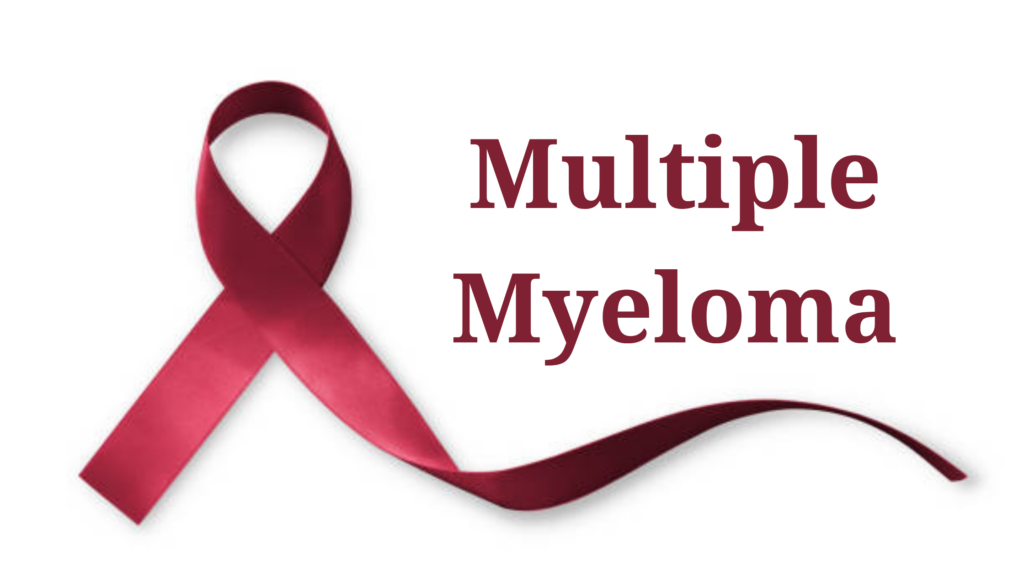Multiple Myeloma is a type of cancer that starts in the plasma cells, which are a type of white blood cell that plays a crucial role in the immune system by producing antibodies. In multiple myeloma, these plasma cells become abnormal and multiply uncontrollably, leading to a variety of complications such as bone damage, kidney problems, anemia, and infections.
🦠 What is Multiple Myeloma?
- Multiple Myeloma is a cancer of the plasma cells, which are responsible for producing antibodies (immune proteins) that fight infections: 🧬🦠
- In myeloma, these plasma cells grow uncontrolled, leading to the production of abnormal antibodies (called M proteins), which can harm organs and bones: 💀⚠️
🦴 Bone Damage:
- One of the main complications of multiple myeloma is bone damage. Abnormal plasma cells produce chemicals that cause bone breakdown, leading to pain, fractures, and weak bones: 💔🦴
- Bone lesions (holes or areas of bone damage) are common: 🔴🦵
🧬 Abnormal Antibodies:
- M proteins (or monoclonal proteins) are abnormal antibodies produced by the myeloma cells. These proteins build up in the body and can lead to kidney damage and immune system issues: 🧬❌🦠
🚨 Symptoms:
The symptoms of multiple myeloma can vary, but the most common include:
- Bone pain: Especially in the back, ribs, and hips: 💥🦴
- Fatigue: Caused by anemia (low red blood cell count): 😓🛏️
- Weakness: Feeling weak or tired due to low blood counts: ⚡😔
- Frequent infections: Due to the impaired immune system: 🤧🦠
- Unexplained weight loss: 🏃♂️💨
- Kidney problems: High levels of M proteins can cause kidney failure: 🧑⚕️💔
🧑⚕️ Diagnosis:
Multiple myeloma is diagnosed through several tests:
- Blood tests: To check for abnormal proteins (M proteins) and signs of anemia or kidney problems: 💉🧬
- Urine tests: To detect M proteins in the urine: 💧🧪
- Bone marrow biopsy: To confirm the presence of abnormal plasma cells in the bone marrow: 🩸🦴
- X-rays, MRI, or CT scans: To detect bone lesions and check for bone damage: 📸🦵
- Bone density tests: To assess the health of bones: 🦴📉
💡 Treatment:
There is no cure for multiple myeloma, but there are various treatments that can help manage the disease and improve quality of life:
- Chemotherapy: To target and kill cancer cells: 💊⚡
- Targeted therapy: Drugs that target specific proteins or pathways involved in the growth of myeloma cells: 🎯💉
- Immunotherapy: Treatment that stimulates the immune system to fight the cancer: 🛡️💪
- Stem cell transplant: Involves transplanting healthy stem cells to replace damaged bone marrow: 🔄🩸
- Bisphosphonates: Medications to help strengthen bones and prevent fractures: 💊🦵
- Radiation therapy: Can be used to target and shrink bone lesions or tumors: 💡🔦
🩺 Prognosis:
- The prognosis of multiple myeloma varies depending on several factors, such as the stage of the disease, the age of the patient, and how well the disease responds to treatment. With newer treatments, survival rates have improved over the years: 📊💖
- People with smoldering multiple myeloma (a precursor to active myeloma) may not experience symptoms for years, and the disease progresses slowly: 🕰️🦵
🏥 Preventing Complications:
- Regular monitoring of bone health, kidney function, and blood counts is essential for managing multiple myeloma and preventing serious complications: 🩺📊
